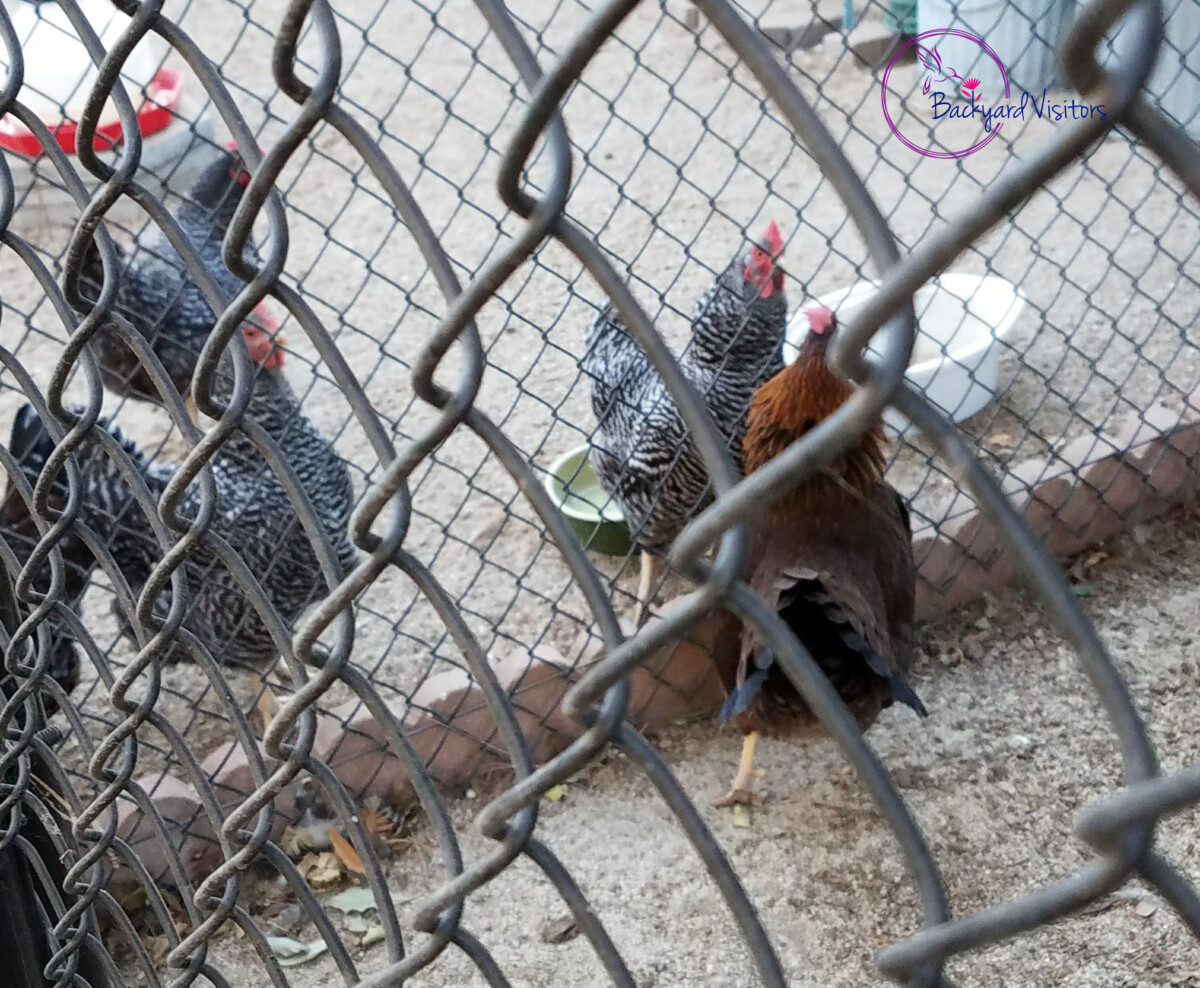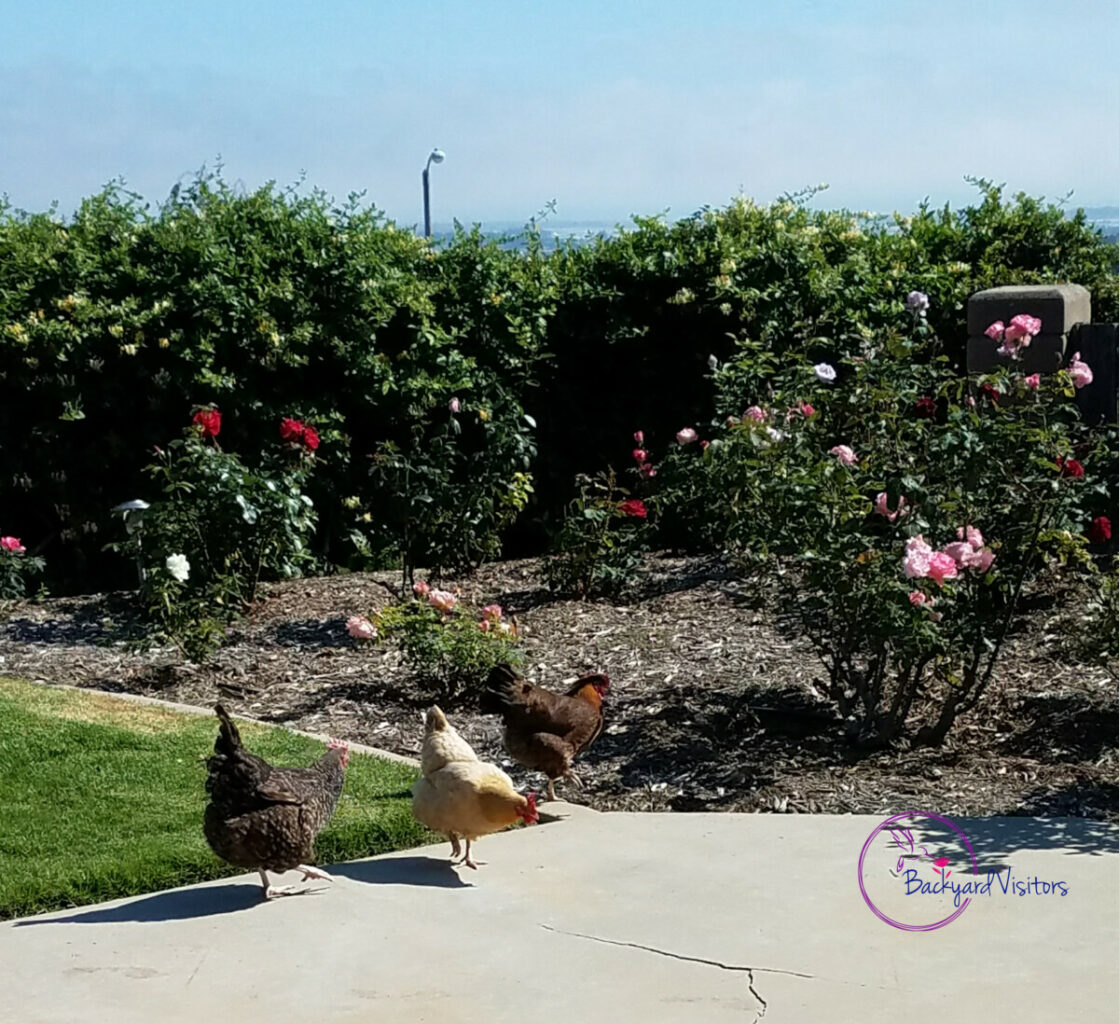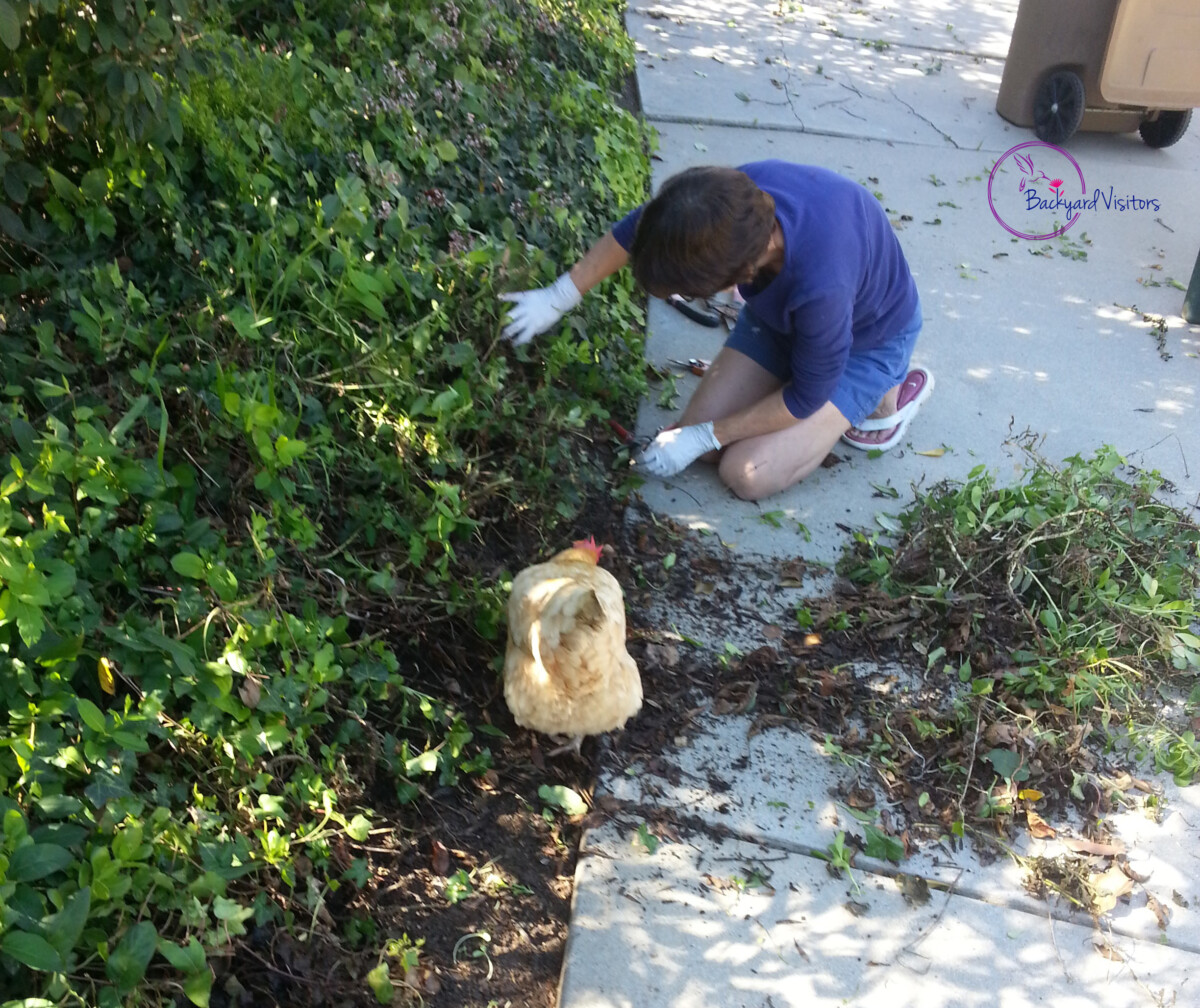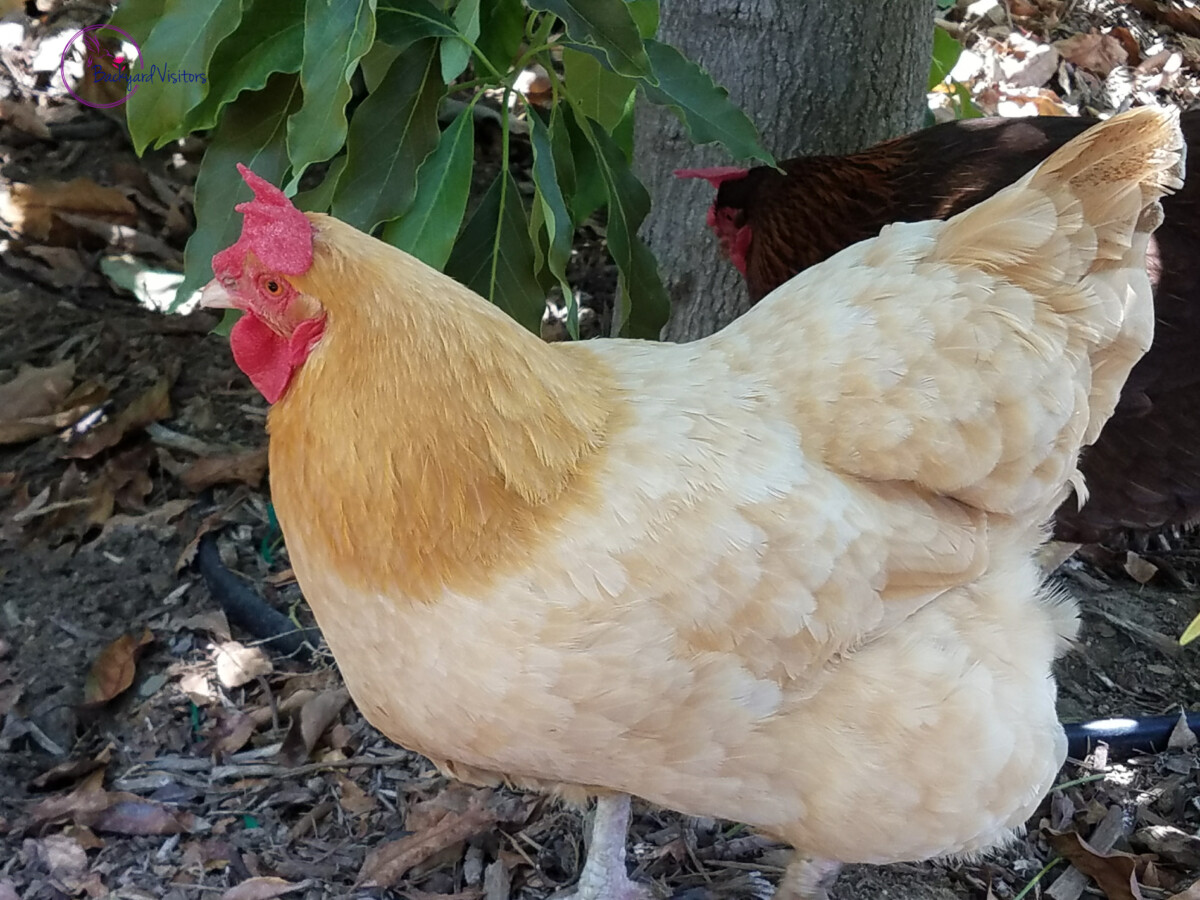This post contains affiliate links.
The feasibility of keeping chickens as indoor pets is the subject of this article, which answers several questions.
Do Chickens Make Good House Pets?
Due to health risks, it is not advised to keep a chicken indoors as a pet. Chickens, while charming, present health hazards as indoor pets and expose humans to potential bacteria from their excrements. Chickens thrive best in an outdoor environment.
Recently, people have expanded the definition of ‘pet’ to include diverse outdoor animals and have started training them to be indoor pets.
You can train chickens to become indoor pets by following good hygiene practices for the benefit of both the chicken and the pet owner.
However, keeping chickens as indoor pets raises health issues because chickens carry pathogens and bacteria such as Salmonella and Campylobacter.
The harmful bacteria from chicken feces can reside on the chickens’ feathers and easily transfer to humans through touch. Bathing a chicken before bringing it inside does not help because the bacteria are difficult to remove with water.
Using chicken diapers reduces bacterial contamination throughout your house, but it is not 100% protective so continue to use sanitary techniques.
You might have seen pictures of chickens wearing cute sweaters or clothing, but this practice can harm the birds by preventing them from regulating their body temperature naturally. These clothes can also harbor mites and lice and even collect feces, posing risks to both chickens and humans.
These microorganisms, often asymptomatic in poultry, make it challenging to identify and can result in severe health issues for humans.
Exposure of pet owners to contamination may lead to health problems, severe illness, gastrointestinal symptoms and in extreme cases lead to death for both chickens and humans.
It is essential to avoid cross-contamination between poultry-related areas and where human food is stored, prepared, or consumed. Always keep the birds away from these spaces that are used within your household.
It is also advisable to exercise caution against possibly transmitting diseases between flocks, which can happen when playing with indoor chickens after playing with backyard chickens or vice versa.
People over 65, children under 5, and individuals with weakened immune systems are more vulnerable. Therefore, we strongly recommend against keeping pet chickens inside your house.
Keep your face away from chickens when interacting with them. Always wash your hands thoroughly after handling them and before handling any food. Hand sanitizer or regular soap and water are both effective in sanitizing your hands before and after handling chickens.
If you need to bring a chicken indoors for recovery from an injury or illness, take precautions to protect both humans and the chicken. If your house becomes an infirmary, be extra cautious of contaminants while the chickens are being isolated because of illness.
Chickens thrive and are happy in their backyard environments, therefore do not keep them indoors regularly in the home. Only invite them inside on rare occasions, in unique circumstances, or if they are in recovery. It is essential to maintain cleanliness and practice good hygiene when handling chickens.
You can have a healthy relationship with your chickens as pets when they are outside in their own element. As a general rule, chickens are better as backyard pets than as confined house pets.
Do Chickens As Indoor Pets Smell?
Indoor chickens are not smelly; however, their living conditions and where they defecate can have an unpleasant smell. Regularly cleaning, maintaining, and ensuring good ventilation in their quarters will eliminate the undesirable odor.
Chickens, like most animals, excrete their waste and go about their business. Like all animals, they generate waste, and their droppings exude a noticeable smell.
They do not naturally emit offensive odors themselves. Chickens primarily create an olfactory challenge within their living quarters when people do not clean and maintain them regularly.
Two key factors contribute to this phenomenon:
1). Prolific defecation, which includes dark-colored feces and white-colored urine.
2). Their innate tendency to incessantly scratch the ground which ultimately transforms it into a malodorous quagmire through the amalgamation of their excrement.
In a confined space such as a chicken coop, the chickens constantly trample and mix all the droppings as they scratch the ground. Furthermore, the decomposition of the supersaturated bedding materials used in the coop to absorb the excrement contributes to the production of foul odors.
Just like outhouses, chicken coops require regular maintenance.
Allowing the waste to build up produces a foul odor.
Indoor chickens pose a special challenge because chicken excrement carries bacteria harmful to humans. Chickens are not able to be potty trained like regular pets such as dogs and cats. Therefore, if you allow a chicken in the house, expect to find a trail of chicken poop wherever they roam.
This trail of chicken poop carries an odor and bacteria, so you would need to constantly clean up after your chickens.
Cleaning is easy if you allow the chickens on tile, wooden flooring, Formica, or some smooth surface. However, cleaning becomes more complicated if the chickens get access to carpeting.
If you choose to let your chickens accompany and follow you in the house instead of confining them to keep their waste contained, you can use chicken diapers as a solution. These diapers let the chickens roam the house without making a mess.
Chickens are not programmed to be lap dogs; therefore, allow them to get back outside into their natural element. Remember, chickens are normally drawn to the outdoors. Preventing them from getting sunshine, dirt baths, and finding grubs deprives them of their natural instincts. If you decide to keep your chickens indoors, make sure to keep their indoor time short.
If you choose to keep chickens indoors temporarily such as for recovery from an injury or illness, be aware of the temperature requirements. Once they are acclimated to warmer indoor temperatures, they need to stay in that environment throughout the winter after their recovery.
Additionally, during the recovery phase, it is vital to keep indoor chickens away from areas where human household members frequent and never allow them near spaces where food is prepared and consumed.
In essence, while chickens can make charming and fun pets, it is important to be aware of the potential health risks they pose.
Practicing good hygiene, keeping them in appropriate outdoor coops, and avoiding indoor housing can help ensure the well-being of both your chickens and your family. Remember, chickens are still barnyard animals, and it is essential to treat them as such to maintain a healthy and enjoyable environment for everyone.
You can coexist with your indoor chickens in the same space without any unpleasant aromas by mitigating the aromas with regular cleaning, optimizing ventilation, and using chicken diapers.
Are Chickens Happier In Cages?
Chickens kept in cages are not happier than chickens raised outside. They both experience high amounts of stress. Their happiness levels are equivalent, although stress factors are different.
Chickens kept in cages and those raised outside both experience high amounts of stress; therefore, there is no difference in their happiness level.
1). Caged chickens enjoy a constant supply of feed and a thermostatically controlled environment, however they have a higher risk of contracting communicable diseases.
2). Backyard chickens enjoy freedom of movement and social contact but are prone to predatory attacks.
Many people highly debate whether chickens are happier in cages than in a free-range environment. Recent research concludes that there is no difference.
Poultry farming uses various types of cages.
Critics widely condemn traditional battery cages for causing stress and discomfort to chickens due to their small and restrictive nature.
Many nations have enacted laws and policies to address these worries and gradually phase out or enhance the conditions of these cages.
Modern cage systems are designed to offer better hygiene and provide more space and amenities for chickens. One significant advantage is that it contributes to a more controlled environment and can prevent the spread of infections and diseases such as avian influenza, which can be a problem for outdoor flocks of hens and wild birds.
Modern cages also protect hens from external threats, such as predators and extreme weather conditions.
Research shows that chickens in modern cages can experience stress levels similar to or even lower than those in free-range systems.
In contrast, free-range systems allow chickens more space to move and exhibit natural behaviors, for instance dust bathing and scratching. However, they face other challenges such as threats from predators, harsh weather conditions, and susceptibility to mature-borne diseases and parasites, which cause stress compared to modern cage systems.
Dr. Jeff Downing, from the University of Sydney, led research that compared the stress levels of chickens raised in cages to those in free-range environments. He measured the level of a stress hormone called corticosterone in both free-range and caged hens and found them to be equivalent.
His research contradicts the allegation made by some animal rights activists. He claims chickens raised in modern cages may not experience more stress than their free-range counterparts.
Animal welfare standards, laws, and ethical issues heavily influence the welfare of chickens in any housing arrangement.
Ensuring the happiness and well-being of chickens requires a focus on improving conditions, irrespective of the housing arrangement.
The debate continues to highlight the pros and cons of the happiness of chickens in cages versus free-range.
Consider factors such as stress levels, disease prevention, and overall well-being when choosing caged vs. free-range chicken habitats.
Making informed choices when deciding on poultry farming and animal welfare is essential.
Can You Keep A Single Chicken?
Keeping a single chicken is possible, but it requires careful attention to its social and psychological needs by providing an enriched environment and mitigating possible behavioral issues since chickens are social birds.
When you keep chickens alone, they may experience loneliness and depression. Some signs to note are picking their feathers out of boredom or stress, pacing and manically pecking at inanimate objects, or becoming lethargic.
Providing companionship and addressing their social and psychological needs is imperative.
Chickens are emotionally intelligent creatures. They can feel loneliness and even experience heartbreak when they lose a close flock member. In such cases, the chicken’s personality and history significantly influence their adaptation to being alone.
Chickens that have had plenty of human interaction earlier in life are more likely to cope well with solitude because they are not as dependent on the other chickens for company.
Older chickens nearing the end of their lives may do better when kept on their own, primarily for their own protection. Introducing an old chicken to a new flock will cause stress for the remainder of their time.

She is not happy!
Hens have a pecking order, and for an aged chicken to have to constantly fight to hold her position in the group is stressful and may shorten her life prematurely.
“To ensure the happiness and health of your solitary chicken, spend time with it and be attentive to its needs.”
If solitary chickens show signs of distress or maladjustment, consider seeking expert guidance from a veterinarian who specializes in poultry care.
If you find yourself in a situation where a solo chicken is alone due to the loss of its companions, consider adopting your chicken into a neighbor’s flock.
Keep in mind that introducing your lone chicken to a new flock will require considerable time and effort for that chicken to be accepted by the new flock. Introducing it too quickly could result in its death. Placing the lone chicken in an adjacent cage will help the chicken integrate into the flock over time.
If successful, this will provide a forever home for your chicken while offering you visiting hours.
While it is possible to keep a single chicken, it is crucial to provide the right environment, attention, and care for its well-being to prevent isolation and loneliness in the chicken.
Do Chickens Need A Yard?
Chickens do not need a yard if adequate space is available within the coop. If the coop space is inadequate, 8 square feet per chicken of yard space will meet their requirements.
When raising chickens, whether for personal backyard enjoyment or commercial purposes, it is important to consider their spatial requirements, including access to outdoor space for foraging, exercising, and egg production, for their overall well-being.
If you are planning to have chickens in your backyard, provide a minimum of 3 square feet of personal space per chicken inside the coop, but 5 square feet is optimal.
Give them 8-10 square feet per chicken of outdoor space for foraging and exercising.
The specific yard size required depends on factors such as the number of chickens and their breed.
Chickens are more content and healthier when they have outdoor space to roam, but the yard size should align with the chickens’ needs and your available area.

roaming the backyard looking for bugs.
Different chicken breeds have varying space requirements. Smaller breeds like Bantam Silkies can do with less space, while larger breeds like Plymouth Rock Chickens need more space to roam.
For instance, a 4×8 foot coop, totaling 32 square feet, can comfortably accommodate 16 free-range chickens. Therefore, this size coop is suitable for starting with 10 chickens in your backyard.
When raising baby chicks, plan on 0.45 square feet for each chick upon arrival. Recognize that because chicks grow quickly, their space requirements must drastically change. For free-range birds, this means increasing the space to three square feet per chicken.
People purchasing backyard chickens do not normally buy chicks. They buy pullets. A pullet’s coop space and yard space requirements will be equivalent to those of a full-grown chicken.
Space requirements differ for commercial broiler farms that raise several flocks per year for the meat industry.
Providing inadequate space or overcrowding can lead to problems like pecking, aggression, and health issues due to crowding and waste accumulation.
Conversely, excessive space can result in issues with temperature regulation, potential parasitic growth, and predator exposure.
Ensuring the appropriate amount of coop and yard space per chicken is crucial for their health and well-being.
Understanding the needs of your specific flock, whether they are backyard pets, broilers, or layers, and providing them with an appropriate living environment is crucial.
How Much Yard Time Do Chickens Need?
A basic guideline recommends spreading a minimum of 30-120 minutes of daylight hours in the yard throughout the day. The time chickens spend free-ranging varies, depending on the particular requirements of each breed of chicken, the size of the outside space, and the seasons.
Chickens prefer to spend the entire day outside in the yard to roam and explore freely. Access to the yard with secure conditions benefits chickens during the day for exercising, foraging, dust bathing, and socializing.
Keeping chickens in the coop all the time is not a good idea unless you have a large coop with ample individual space for them.
Chickens can start plucking each other’s feathers or pecking at each other when they get bored.

Backyard chickens require a total minimum of 30-120 minutes of yard time daily. This time can be portioned multiple times a day, with or without supervision, depending on your comfort level and what your schedule allows.
To keep an eye on your chickens and prevent them from wandering too far, shake a container of mealworms every now and then to get them to come back to home base.
Sometimes, a stubborn chicken refuses to come back home and likes to push the limits of acceptability.
To circumvent the above problem, you can let the chickens out right before sunset, taking advantage of their natural instincts to come home to roost for the night.
Some chicken owners claim that letting them out just before sunset does not provide chickens with adequate time outside and that they have an increased risk of being eaten by predators. Therefore, it is up to each chicken owner to test the waters and decide what works best for their situation.
Chickens require a minimum of 2-3 hours of outdoor access per day to qualify as ‘free-range.’
The available space in the backyard is important for free-range chickens.
Keep in mind that free-range chickens are vulnerable to danger from predators.
Ensure the outdoor area is safe by providing secure fencing and shelter to protect them.
Chickens can spend more time outside comfortably with more space.
The amount of outdoor time varies with the seasons in some regions.
In colder climates, chickens may not want to spend as much time outside during the winter. During the spring and summer months, when outdoor weather is pleasant and enjoyable, chickens prefer longer periods in the yard.
Chickens raised for commercial purposes in a given region must adhere to specific regulations or guidelines that require a certain amount of outdoor time for labeling poultry as ‘free-range’ or ‘pasture-raised’.
Chickens require access to shelter all through the year to keep them safe from harsh weather conditions, including torrential rain, frigid snow temperatures, and intense heat.
Provide the best quality habitat for your chickens for them to express their natural behaviors by designing a landscape full of diverse plants that attract insects, creating spots for dust bathing and perching and allowing access to covered shelter for protection from the elements.
An alternative to providing a chicken-friendly fenced-in yard is providing a guard dog with your chickens, or you being outside with your chickens, to deter predators. Designate a free-range area that is easily monitored, design a logical layout, and provide covered areas to hide.
Ensuring the yard is secure to protect your chickens from predators and providing access to shelter, food, and water.
Chickens are happier and healthier when they spend more time outside in the yard.
Do Chickens Like To Be Petted?
In general, chickens enjoy being petted; however, individual birds and breeds vary in their tolerance. While some chickens find being petted enjoyable, others may not be as receptive. How much human interaction they receive early in life as chicks often determines their tolerance for being petted.
Chickens may not initially recognize the pleasure of being petted and react defensively with a flight response. However, after a positive petting encounter, they gradually relax and become more comfortable when handled.
How much a chicken enjoys being petted is affected by its breed and unique personality. Nevertheless, all chickens can be trained. Initially, a defensive fight-or-flight response is exhibited by them, but with patience and gentle handling, being petted can be learned to be appreciated, and a stronger bond between the chicken and its owner can be fostered.
The following are guidelines for petting chickens:
Approach Slowly and Calmly: To prevent stress and reduce the possibility of fear, approach them gently and calmly. Chickens get startled by sudden movements or loud noises because they interpret these actions as predatory behaviors. Your footsteps will create enough sound to let the chickens know you are approaching them. If you are with a child, remind them to be quiet.
Get on Their Level: To avoid scaring the chickens, sit or crouch down next to them to be at their eye level. Chickens are more likely to come to you if you are not towering over them.
Offer Food or Treats: Lay some chicken food around you or use treats like mealworms or table scraps to attract them when training. Providing chickens with enticing rewards will help them feel safe and more at ease, developing favorable associations with their caregivers.
Feed from Your Hand: Once the chicken becomes comfortable eating near you, offer food from your open hand. Extend your hand as far away from your body as possible to make the chicken feel safe.
Build Trust: Spend time with them regularly. They will become accustomed to your presence and be receptive to petting over time. Be patient, and let the chicken decide when it is ready.
Building a trusting relationship with chickens takes time and patience. If the chicken is skittish, it will take multiple sessions of attempting to entice them toward you before they are comfortable being petted.
Approach from Behind: Some chickens will squat down in a submissive manner instead of fleeing when you approach them from behind. This behavior is natural for them; it is similar to how they react when a rooster approaches for mating. Use this opportunity to gently pet them or to pick them up to pet them.
Reach Out and Pet Slowly: When the chicken is within arm’s length, use a gentle, non-threatening hand movement to pet its back. This area is easy to access, and you can gradually work your way to other parts of their body. Ensure the chicken sees your hand to avoid startling them.
Hold the chicken with both hands and make sure your fingers are under its belly and your hands are securing its wings. Do not squeeze too tightly, as you want to prevent it from escaping without causing harm.
Avoid grabbing them by their wings or legs. This can make the chicken panic and struggle to escape. Be prepared for the chicken to run away at first; however, practice makes perfect. Keep in mind that it could take a few tries to get a chicken used to being held and petted. Therefore, proceed slowly, use kindness, and respect the chicken’s boundaries.
Once the chicken is safely in your arms, use your free hand to pet them comfortably.
Respect Their Space: Be mindful of a chicken’s personal space. Some chickens may not want to be touched or may have specific areas they prefer to be petted, such as their back or neck. Watch for cues and pay attention to the chicken’s body language. If they seem agitated or uncomfortable, it is best to give them space and not force interaction.
Not every hen loves being handled. Observe their personal boundaries and tastes. Food rewards, gentle touch, and quiet environments all aid in their process of familiarization. Be careful not to grab their legs or wings when holding them.
Patience holds the key to building a strong bond with your chickens. It will lead to delightful encounters that are necessary for building trust and positive relationships.
Check out my other posts on Backyard Chickens
Enjoy your chickens as they are delightful pets!
Backyard Visitors participates in affiliate programs which compensate us for referring traffic.


